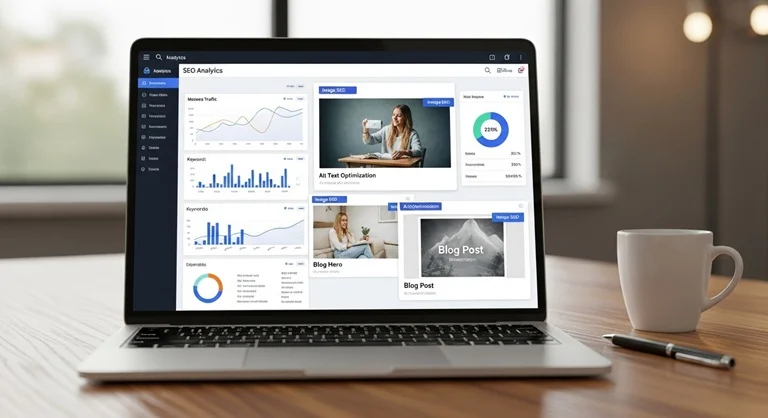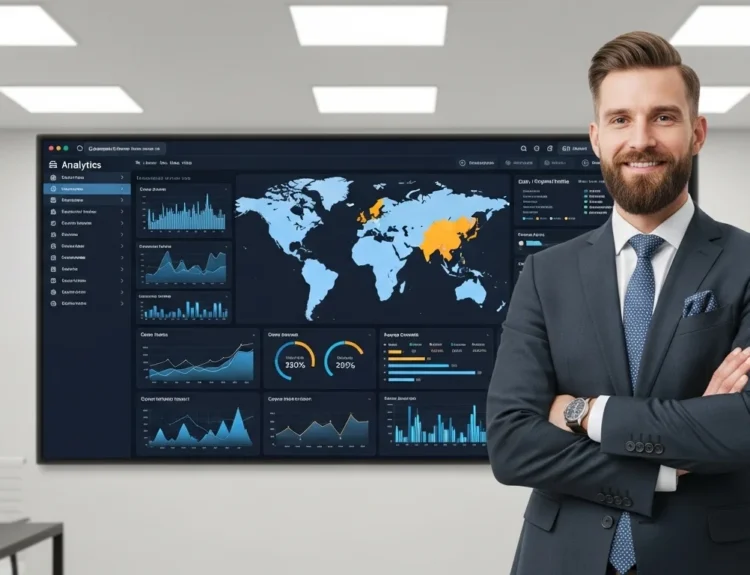Images have a strong impact on how search engines evaluate your page. Search engines analyze text and visuals to measure content quality. A page with optimized visuals performs better because it looks complete and engaging. Search engines value pages that improve user experience, and visuals do that by keeping visitors interested.
Images also influence time-on-page. When users stay longer to view graphics, charts, or photos, it signals value to search algorithms. This behavior boosts ranking potential. Visuals make articles easier to understand and break down complex information into digestible parts.
However, search engines cannot interpret images like humans. They rely on alt text, file names, and captions. When these elements are optimized, images contribute to better indexing and visibility on platforms like Google Images.
How Images Affect Search Engine Rankings
Images support rankings indirectly. They reduce bounce rate, improve engagement metrics, and make content shareable. If users spend more time on a visually rich page, Google interprets it as relevant and trustworthy.
Images also increase the chance of your content appearing in image searches. For example, product photos or infographics can drive organic traffic from Google Images. Websites that publish visual content in every post usually gain higher click-through rates.
Unoptimized images can hurt SEO. Large file sizes slow down load time, which lowers ranking. Search engines favor fast pages, so image compression is critical. Quality images, paired with speed optimization, improve both visibility and user satisfaction.
The Role of Visual Content in User Engagement
Visual content captures attention faster than text. A well-placed image makes a reader pause and absorb the message. Articles with relevant visuals gain more engagement, comments, and shares.
In marketing, visuals improve recall. Studies show people remember 65% of visual information three days later compared to 10% of written text. This retention builds brand authority and repeat visits.
For SEO, engagement means more clicks and longer session duration. Search engines track these metrics and favor websites that hold users’ attention. Infographics, diagrams, and photos create variety, encouraging visitors to scroll through the page instead of leaving quickly.
Optimizing Images for SEO
Image optimization means reducing file size without losing clarity and providing descriptive data for search engines. Start with file naming. Use clear, keyword-rich file names, such as “organic-skin-care-products.jpg” instead of “IMG_1234.jpg.”
Add alt text that describes the image. Alt text is critical for accessibility and helps Google understand image context. Use concise descriptions like “doctor using AI-based diagnostic system” or “fresh fruits for healthy diet.”
Compress images with tools like TinyPNG or ShortPixel to maintain speed. Use WebP format for lightweight, high-quality visuals. Add structured data if you want your images to appear as rich results in Google Search.
Does Adding More Pictures Improve Your Website’s SEO?
Adding more pictures can improve SEO, but only if done strategically. Quantity helps only when each image adds context, supports the topic, and is properly optimized. A 2,000-word article with six to eight well-chosen visuals performs better than one with none.
Too many unoptimized pictures can slow your site. Slow load times reduce user satisfaction and ranking potential. The goal is balance. Use enough visuals to enhance understanding without harming performance.
Diversity in images also matters. Use infographics, screenshots, and product photos, not repetitive stock images. Google prefers originality and relevance. Each image should have a clear purpose.
The Psychology Behind Visual Content and SEO
Humans process visuals 60,000 times faster than text. Images activate emotional responses that influence engagement and decision-making. When users connect emotionally with content, they stay longer and interact more.
This user behavior benefits SEO. Engagement metrics like dwell time and interaction rate signal value to search engines. A visually stimulating page keeps users curious. That curiosity translates into higher retention, which boosts rankings.
Color, composition, and tone also affect perception. A clean, consistent visual style builds trust and encourages return visits. Search engines measure returning traffic as a positive ranking signal.
Best Practices for Image Optimization
Follow these core practices to gain SEO benefit from visuals:
• Use descriptive, keyword-focused file names.
• Write short, accurate alt text.
• Compress images before uploading.
• Use responsive images that adjust to all device sizes.
• Add captions where necessary.
• Implement lazy loading to improve page speed.
• Submit image sitemaps for better indexing.
These steps improve image discoverability in Google Search and maintain fast site performance.
How Image Quantity and Quality Influence Search Rankings
Both quantity and quality affect SEO. High-quality, relevant visuals increase trust, while an appropriate number of visuals keeps users interested.
For example, product-focused sites often use multiple high-resolution photos per item. This increases conversions and organic visibility. In contrast, a blog might need fewer images that illustrate concepts.
Google rewards balance. Sites with too many unoptimized visuals suffer from slow loading. Quality matters more than raw count. Each image should improve comprehension and add value to the content.
Case Studies: SEO Success with Image Optimization
Several brands have achieved higher rankings through smart image strategies.
• E-commerce: A retailer optimized product photos using descriptive alt text and WebP format. Result: 30% faster load time and 22% traffic increase.
• Health Blog: A site added infographics explaining nutrition data. Result: 18% higher engagement and 15% longer time-on-page.
• Tech Company: Added diagrams and charts in case studies. Result: improved search visibility for long-tail keywords.
These examples show that visual optimization supports user experience and boosts organic growth.
Common Mistakes to Avoid When Using Images for SEO
Avoid using images with no alt text. Search engines cannot read them without context. Do not upload massive image files. They slow load times.
Refrain from using irrelevant stock photos. These weaken authenticity and mislead readers. Also avoid duplicate visuals across multiple pages, as this can confuse Google’s indexing.
Never ignore mobile optimization. If your images are not responsive, they distort on phones and affect user experience. Always test visuals on different devices.
Tools for Optimizing Images for Search Engines
Use reliable tools to automate and simplify optimization:
• TinyPNG and ShortPixel for compression.
• Canva or Adobe Express for resizing and editing.
• Google PageSpeed Insights to test load times.
• Ahrefs or Semrush to analyze image-based traffic.
• ImageMagick for batch optimization.
• Screaming Frog to audit alt texts and image attributes.
These tools improve performance, accessibility, and SEO alignment.
Conclusion
Images can significantly improve your website’s SEO when optimized correctly. They increase engagement, reduce bounce rate, and attract traffic from Google Images. Focus on quality, relevance, and speed optimization rather than adding images randomly.




